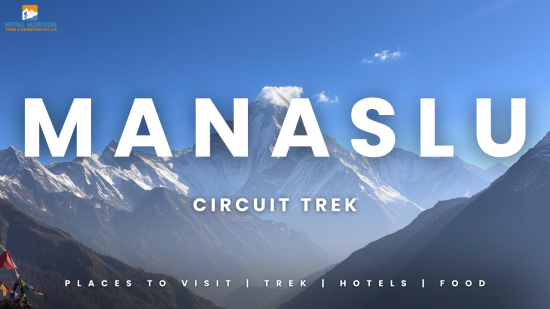Everest Base Camp Trek Review
24th December 2024
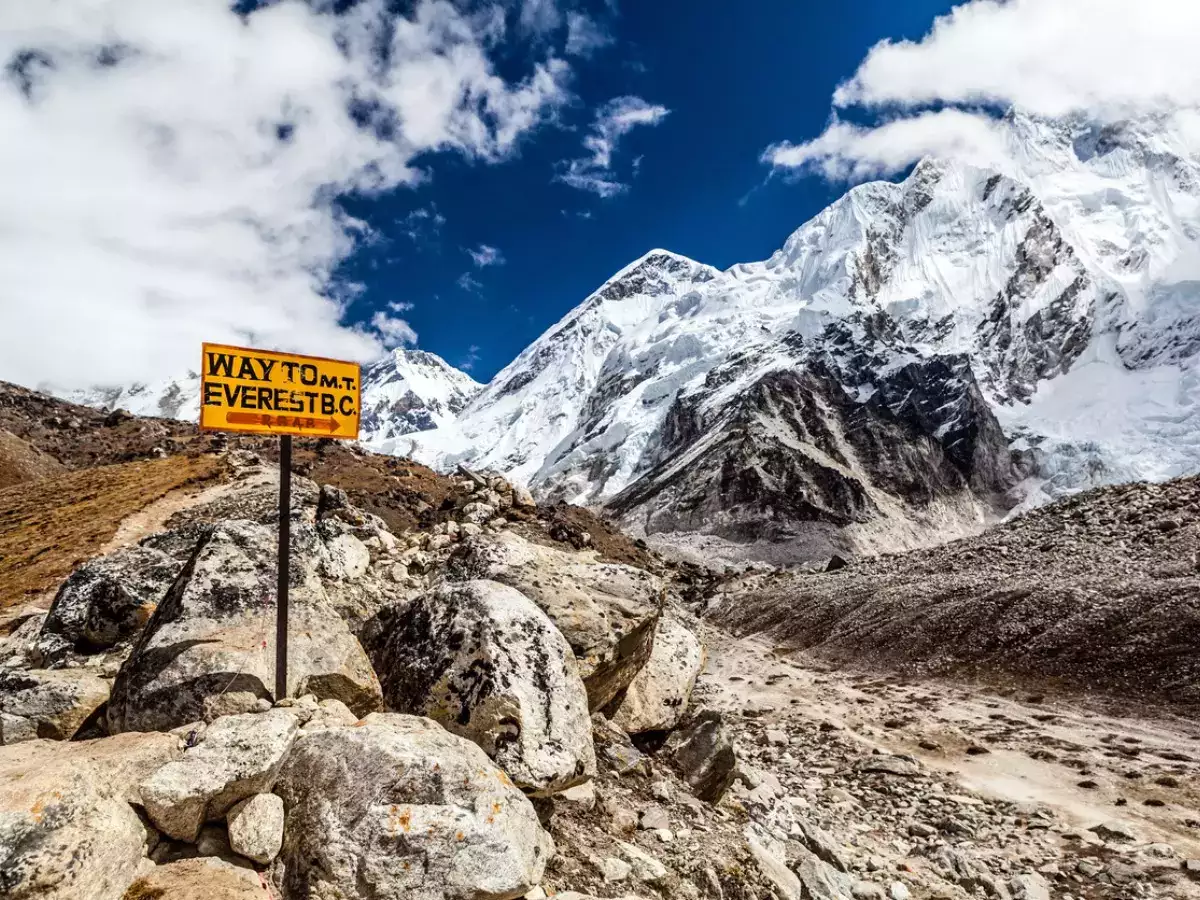
The Everest Base Camp (EBC) Trek is one of the most iconic treks where trekkers can see extraordinary views and landscapes. It is a rewarding journey where you can experience stunning views of the Himalayas, Sherpa culture, physical challenges, spiritual exploration, Buddhist monasteries, and, most thrilling of all, the opportunity to see and feel the world's tallest mountain, Mount Everest, which stands at 8,848 meters. You can share the experience with your friends and family.
Trekking to EBC is one of the most exciting treks in the world, located in the Khumbu district. If you love adventure, you will love this trek. Each day trekker will take a part involving exciting walks and exploration in the Khumbu region. The goal each day is to reach the destination through 7-8 hours of walking. Along the way, you will explore different places, where you can immerse yourself in nature and cultural experiences.
Before Starting
Before you start the trek, the guide will provide you with valuable information about the EBC trek. Our guides are experienced and reliable, with years of expertise. They are knowledgeable about the journey, ensuring you can enjoy the trek without problems. They will ensure your safety and make your journey more enjoyable, allowing you to become more familiar with Nepal's culture.
The trek begins with a 30 to 45-minute flight, covering 138 kilometers (85 miles) from Kathmandu’s Tribhuvan International Airport to Lukla Airport, officially known as Tenzing-Hillary Airport, one of the most famous airports in the world. Flying into Tenzing-Hillary Airport is often described as thrilling and is something many trekkers remember for a lifetime.
The journey from Lukla to Sagarmatha National Park covers 65 kilometers. Although this distance may seem long, the trek is divided into manageable sections, with 10-15 kilometers covered each day in 7-8 hours of walking. Along the way, there are many things to explore, making it a great adventure. Some highlights include stunning landscapes, rich cultural experiences, and diverse wildlife. Trekkers will engage with the natural and cultural features that highlight the beauty and significance of the Sagarmatha National Park, which is also a UNESCO World Heritage Site.
The trek offers spectacular views of the highest and most iconic mountains. You will encounter dramatic Himalayan landscapes, with towering peaks dominating the horizon. Key mountains like Lhotse, Nuptse, Ama Dablam, Makalu, and many others are visible along the way.
Why you should go to Everest Base Camp (EBC) Trek?
The EBC trek is a journey that challenges you physically and mentally. Every location along the trek, such as Kala Patthar, Tengboche Monastery, Phakding, and others, offers unique scenery. You can also explore many high peaks that are rare to see. The trek passes through subtropical forests filled with rhododendron, pine, and oak trees. This trek offers not only a physical challenge but also a deep connection with the majestic Himalayas.
Is Everest Base Camp (EBC) Trek is difficult for me?
The trek is challenging due to the high altitude, but with proper preparation and support from experienced guides, anyone can complete it. The trek does not require technical mountaineering skills, only fitness and endurance, which can be developed during the journey.
About Lukla flight
As mentioned earlier, the trek starts with a flight from Kathmandu to Lukla, which takes 30 to 45 minutes. The flight distance is 138 kilometers (85 miles). Lukla’s Tenzing-Hillary Airport is famous for its challenging terrain, and many trekkers find it thrilling, creating memories that last a lifetime.
Altitude sickness in Everest Base Camp
It is one of the most significant challenges trekkers face during the Everest Base Camp (EBC) trek: altitude sickness, also known as Acute Mountain Sickness (AMS). As trekkers go higher into the Himalayas, the air becomes thinner. Altitude sickness includes symptoms such as headaches, nausea, dizziness, shortness of breath, and fatigue. These symptoms typically occur above 2,500 meters (8,200 feet). At Everest Base Camp, the altitude is 5,364 meters, or 17,598 feet. The risk of altitude sickness is very high.
How to prevent Altitude Sickness?
EBC trek is designed with regular rest days. Some places we will be adjusting the altitude for our body in places like Namche Bazaar, and Dingboche. You will be aim to hike high in the day but at night you will sleep at lower altitude. If AMS occurs with then the remedy is to descend to a lower altitude immediately. Most trekkers manage to avoid the symptoms by resting, staying hydrated, and avoiding overexertion.
With the help of guide and porter experience the altitude sickness problem can be reduce and make journey safe and successful.
Why do I need Guide and Porters?
The Everest Base Camp (EBC) trek is an unforgettable adventure, and having the right team with you makes it even better. Nepal Horizon suggests hiring porters and guides to make your journey safer and more enjoyable. Here’s why:
1. Safety and Expert Help
The EBC trek has tough trails, high altitudes, and unpredictable weather. A guide helps you stay safe, knows the best paths, and can handle emergencies like altitude sickness.
2. Learn About Local Culture
Guides do more than lead the way. They share stories, history, and traditions of the Khumbu region, helping you understand the culture. They’ll explain things like prayer flags and local customs, making your trek more meaningful.
3. Trek Without the Heavy Load
Porters carry your bags, so you can focus on enjoying the views and hiking without the strain. They’re used to the trails and know how to manage the load.
4. Support Local Families
When you hire guides and porters, you’re helping local families who rely on trekking for their income. It’s a great way to give back to the community.
5. Easy Planning
Guides handle permits, meals, and places to stay, saving you time and effort. Their connections with local teahouses mean you’ll have a smoother experience.
6. Encouragement Along the Way
When the trek gets tough, your guide and porter will motivate you to keep going. Their support and positive attitude will help you reach your goal.
Hiring experienced porters and guides through Nepal Horizon ensures your trek is safe, fun, and stress-free. You’ll also connect more deeply with the beautiful Himalayas and the amazing people who live there.
Best Season for trekking to Everest Base Camp
Everest Base Camp is a famous trek and a popular adventure that can be done in any season. The spring (March –May), autumn (September –November) are considered some of the best seasons for the EBC trek, while winter (December – February) brings very cold temperatures, and during Monsoon (June-August) there will be heavy rainfall, making route very challenging.
The best season to trek in EBC are during spring (March to May) and autumn (September to November). During this season the weather condition are comfortable.
If you want see the surrounded peaks with clear skies and less cloud cover, then spring is the best season for EBC trek.
In autumn, the weather will be clear after the monsoon rains, making it a great time to hike with fewer crowds and clear views.
Itinerary of Nepal Everest Base Camp
Everest base camp trek can be completed in various ways and over different durations. Depending on your time and interest in exploring the Everest region, you can customize your own itinerary. Some people want to combine the EBC trek with a visit to Gokyo Lake, some prefer to combine it with Island peak climbing, other choose to Everest base camp and return Kathmandu by Helicopter. Therefore, it’s important to first clarify your destination and the activities you wish to include, and then contact our agency to booking your package. We will recommend you a suitable package and duration based on your need.
Outline Itinerary for 16-day Trek
Day 1: Arrival in Kathmandu
Day 2: Trek preparation on Kathmandu with Sightseeing
Day 3: Flight to Lukla, Trek to Phakding
Day 4: Trek from Phakding to Namche bazaar
Day 5: Acclimatization Day at Namche Bazaar
Day 6: Trek from Namche bazaar to Tengboche
Day 7: Trek from Tengboche to Dingboche
Day 8: Acclimatization day at Dingboche
Day 9: Trek from Dingboche to Lobuche
Day 10: Trek from Gorak Shep and visit Everest Base Camp
Day 11: Trek from Gorak Shep to Kalapatthar, then descend to Pheriche
Day 12: Trek from Pheriche to Namche Bazar
Day 13: Trek from Namche bazaar to Lukla
Day 14: Flight from Lukla to Kathmandu
Day 15: Free day for Kathmandu Sightseeing
Day 16: Final departure
Accommodation during Everest Base Camp
When trekking to Everest Base Camp, having the right place to stay is important for a comfortable and enjoyable journey. Nepal Horizon takes care of your accommodation needs so you can focus on the amazing adventure ahead.
Types of Accommodation on the EBC Trek
1. Teahouse Lodges
Trekkers usually stay in teahouses—simple, cozy lodges run by locals. Nepal Horizon works with reliable teahouses to make sure you have a clean and comfortable place to rest.
2. Room Setup
Rooms are basic with twin beds, a mattress, pillows, and blankets. Nepal Horizon suggests bringing a good sleeping bag for extra warmth in higher altitudes.
3. Shared Facilities
Bathrooms are often shared, and hot showers might cost extra. Some teahouses also charge for electricity to charge your devices. Nepal Horizon ensures you are prepared for these facilities.
4. Dining Areas
Teahouses have communal dining rooms where trekkers eat and relax. They serve a mix of local dishes like dal bhat and international meals. Nepal Horizon makes sure you have access to clean and healthy food throughout your trek.
5. Wi-Fi and Charging Services
Many teahouses offer Wi-Fi and charging services for an extra fee, but these may become less reliable at higher altitudes. Nepal Horizon helps you plan for limited connectivity.
Why Choose Nepal Horizon for Accommodation?
- Pre-Booked Stays: We secure your teahouse bookings in advance, especially during busy seasons.
- Clean and Safe Lodges: Nepal Horizon selects teahouses known for their cleanliness and good service.
- Expert Guides: Our guides know the best teahouses and will ensure your comfort every step of the way.
- Custom Plans: Whether you’re trekking solo or in a group, we tailor accommodation to suit your needs.
Helpful Tips for Your Stay
- Carry cash for extras like hot showers or charging devices.
- Bring a sleeping bag for added comfort and warmth.
- Pack light toiletries and essentials for personal use.
- Dress in layers to stay warm, especially at higher altitudes.
With Nepal Horizon, your accommodation will add to the joy of your Everest Base Camp trek. Let us handle the details while you enjoy the beauty of the Himalayas.
Start Your Journey with Nepal Horizon!
Relax and let us make your trek unforgettable.
Meals on the Everest Base Camp trek
Eating well is very important for a fun and successful trek to Everest Base Camp. Good meals give you energy and let you enjoy the local flavors of the region. Nepal Horizon makes sure you get clean, healthy, and tasty food to keep you strong throughout your journey.
What Meals Can You Expect?
Local and International Foods
Teahouses along the trek offer a mix of Nepali and international dishes. Nepal Horizon picks places where food is safe and well-prepared.
- Local Foods: Dal Bhat (rice, lentils, and vegetables), Sherpa stew, and momos (dumplings) are filling and nutritious.
- Familiar Options: You can also find pasta, noodles, pancakes, eggs, and even pizza for variety.
Daily Meal Schedule
You’ll have three meals a day during the trek:
- Breakfast: Start the day with porridge, eggs, bread, or pancakes, along with tea or coffee.
- Lunch: Take a mid-day break with light meals like fried rice, soup, or noodles.
- Dinner: End your day with a hearty meal like dal bhat, which often comes with free refills to keep you full.
Snacks and Drinks
Snacks like energy bars, biscuits, and chocolates are available at teahouses. Nepal Horizon suggests bringing some of your favorite snacks for quick energy. Safe drinking water is available, and purified or boiled water is the best option.
Why Choose Nepal Horizon for Meals?
- Clean and Healthy Food: Nepal Horizon works with teahouses that provide safe and fresh meals.
- Energy Boost: We make sure your meals give you the energy needed for trekking.
- Local Advice: Our team helps you pick the best meals and enjoy local dishes.
- Custom Options: If you have special food needs, we help make sure they are met.
Tips for Eating on the Trek
- Eat vegetarian meals at high altitudes for easy digestion.
- Drink lots of water or tea to stay hydrated.
- Avoid alcohol and heavy food to reduce altitude sickness.
- Pack a few snacks you like for extra energy.
With Nepal Horizon, your meals on the trek will not just keep you energized—they’ll also add to the joy of your Himalayan adventure.
Start Your Journey with Nepal Horizon
Let us handle the details so you can enjoy delicious meals and focus on the incredible trek ahead!
Require Equipment for the Everest Base Camp trek
Preparation is key for the Everest Base Camp trek. We recommend having the right equipment to stay safe and comfortable in the challenging high-altitude conditions. Below is a list of essential items:
Clothing
- Thermal tops and bottoms
- Fleece jacket
- Down Jacket
- Waterproof and windproof jacket
- Trekking Pants
- Hat and Gloves
- Trekking boots
Accessories
- Trekking Bag
- Duffel bag
- Sleeping Bag
- Headlamp or Torch
- Water Bottle
- Adjustable trekking poles
Personal gear
- Sunscreen
- First Aid Kit
- Toiletries
- Power Bank
- Camera
Documents
- Passport with photocopy
- Permits: TIMS (trekkers’ Information Management System) cards and Sagarmatha National entry permit (can be obtained in Kathmandu)
Additional Gear
- Gaiters
- Crampon/Spikes
- Altitude-Specific gear
Optional gear
- Solar Charger
- Book
- Travel pillow
- Earplugs and Eye Mask
Safety Gear
- Satellite Phone or GPS
- Personal Locator Beacon (PLB)
Permits for Everest Base Camp Trek
To trek to Everest base Camp, you need Everest base camp permits, which is listed below:
- Khumbu Rural Municipality Permit
- Sagarmatha National Park Entry Permit
Fitness requirements
The Everest Base Camp trek is a challenging yet achievable adventure for many people. A certain level of fitness, endurance, and mental resilience is required for long days of walking. While there are plenty of checkpoints for rest along the way, it’s recommended to do some preparation before the trek. Jogging in the mornings to build stamina and doing strength workouts will help you physically and mentally throughout the journey.
About Flight delays in Lukla
The flight to Lukla is one of the most challenging due to its short duration. Adverse weather conditions often lead to flight cancellations. We recommend allowing an extra 2-3 days in case the flight is delayed.
Recent From Blogs
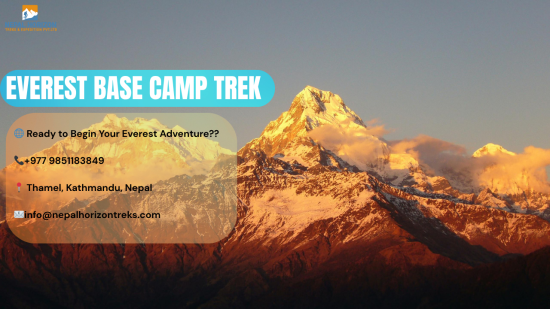
28th October 2025
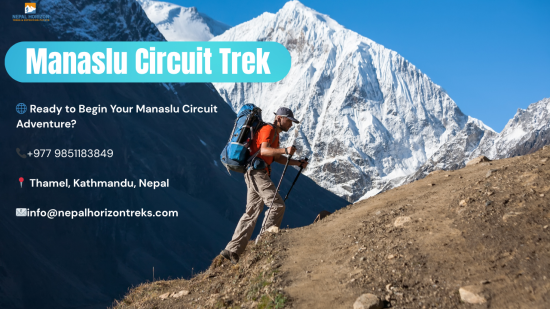
25th October 2025
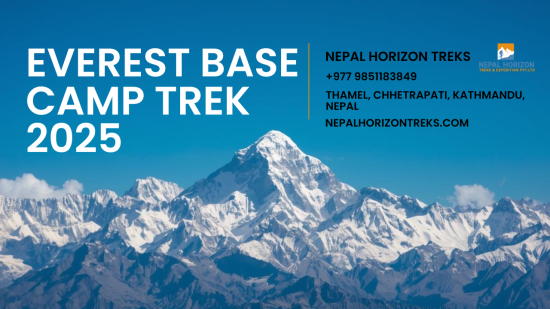
24th October 2025
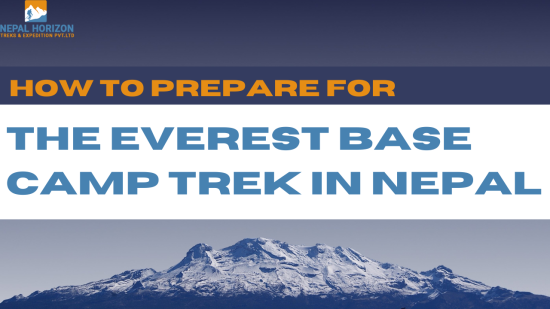
18th October 2025
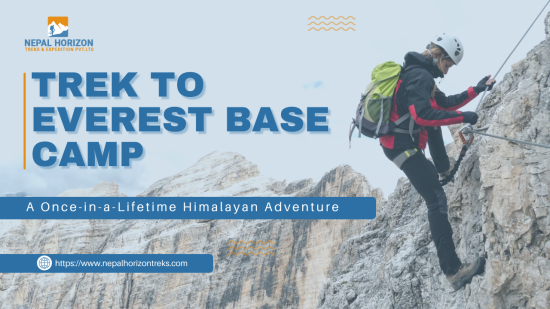
14th October 2025

12th October 2025
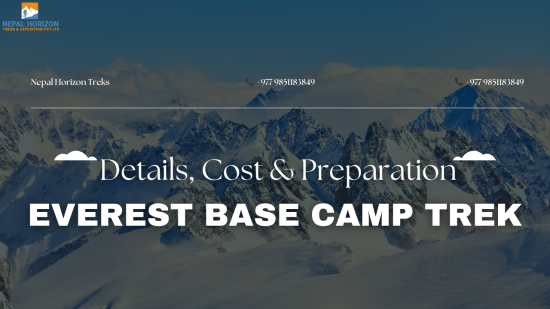
10th October 2025

7th October 2025


